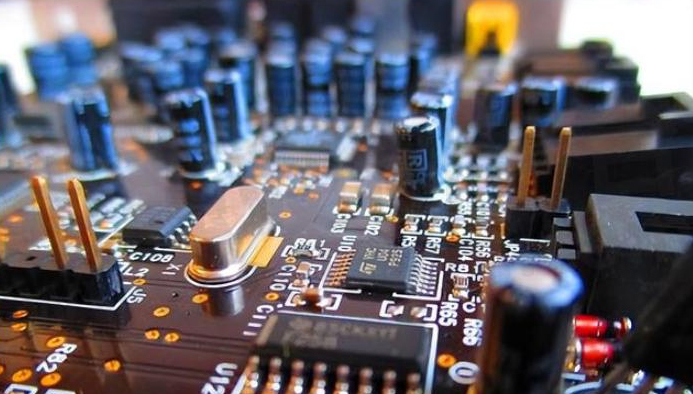► Understanding EMC and EMI in PCB Design

1.1 EMC (Electromagnetic Compatibility)
Electromagnetic Compatibility (EMC) refers to a PCB’s ability to operate within its electromagnetic environment without causing intolerable interference to surrounding electronic devices. Achieving EMC compliance requires engineers to consider three key factors:
- Generation and propagation of unwanted electromagnetic radiation.
- Susceptibility of circuits or components to external electromagnetic interference (EMI).
- Ensuring the PCB itself does not generate intolerable interference.
In simple terms, EMC ensures that an electronic system can function in a shared electromagnetic environment by being immune to external disturbances, minimizing self-interference, and avoiding interference with other systems.
1.2 EMI (Electromagnetic Interference)
Electromagnetic Interference (EMI) is the unwanted impact of electromagnetic waves from external sources on a device. EMI, also referred to as electromagnetic noise, can originate from other electronic devices or natural sources. Engineers should adhere to EMC standards to minimize the total amount of EMI and its effects.
In PCBs, various interference sources can lead to different categories of EMI, including:
- Conducted emissions (signal and power integrity issues).
- Radiated emissions.
- Immunity to radiated and conducted emissions.
- Electrostatic discharge (ESD).
► 9 Tips to Avoid EMC and EMI Issues in PCB Design
1. Grounding Strategies
Since all circuits require grounding, the ground plane is the first line of defense against EMI. Consider the following measures to reduce EMI:
- Increase the ground area: Expanding the PCB’s ground area helps to dissipate noise and reduce crosstalk. If ground planes are insufficient, adding an extra layer can help.
- Dedicated ground planes: In multilayer PCBs, dedicated ground planes are crucial. High impedance levels often result from inadequate grounding.
- Connect all components to the ground plane: Ensuring each component has a reliable ground connection is essential.
- Place decoupling capacitors properly: Decoupling capacitors should be placed between power and ground to minimize return currents and EMI.
- Ensure the ground plane is directly below signal traces: This shields EMI and provides a low-inductance, low-resistance return path.
- Separate digital and analog grounds: Digital and analog circuits should be isolated. Low-frequency circuits should use single-point parallel grounding, while high-frequency circuits should use multipoint grounding with short and thick traces.
- Use thick ground traces: Thicker ground traces reduce noise susceptibility. Copper pour should be interconnected with thick traces to enhance ground quality.
- Minimize ground loop length: Long ground paths create inductive issues, impacting signal integrity.
- Create a closed-loop ground structure: Digital circuit PCBs benefit from looped ground structures, improving noise resistance.
2. Power Integrity Design
Improper power distribution can introduce significant noise and degrade performance. Key factors affecting power stability include:
- Excessive transient current during high-speed switching.
- Inductance in the power loop.
To ensure power integrity, follow these guidelines:
- Power decoupling filter design: Place a 0.01µF–0.1µF decoupling capacitor at IC power inputs to reduce noise.
- Power filtering: Use filters on power supply lines to prevent coupling and loop formation.
- Power protection: Implement overcurrent protection, undervoltage alarms, and overvoltage safeguards with fuses and varistors.
3. PCB Layout Techniques
- PCB size consideration: Large PCBs increase impedance and cost, while small PCBs cause heat dissipation and crosstalk issues.
- Avoid right-angle traces: Right-angle bends alter impedance and cause signal reflections.
- Separate signal types: Isolate high-frequency, low-frequency, and power signals to prevent interference.
- Increase trace width: Wider traces minimize radiation emissions.
- Minimize current loops: Keep return paths short to reduce EMI.
- Optimize via usage: Excessive vias introduce inductance and can cause signal integrity issues.
4. Component Placement
- Separate analog and digital components.
- Minimize high-speed component interference using shielding and short routing.
- Prioritize IC components for better integration and lower failure rates.
- Place sensitive components away from power sources.
- Increase spacing between high-potential components to prevent short circuits.
5. PCB Layer Stackup Design
- Use multilayer PCBs for high-density, high-frequency circuits.
- Power and ground planes should be adjacent to reduce impedance.
- Ensure no signal traces cross split planes to minimize EMI.
- Design at least a 4-layer PCB for signal integrity at high frequencies.
6. EMI Shielding
- Component shielding: Metal enclosures can be used to block EMI.
- Cable shielding: Grounding cables reduce EMI propagation.
- Low-pass filtering: Eliminates high-frequency noise from power lines.
7. Trace Routing
- Minimize discontinuities in traces, keeping widths consistent.
- Keep clock traces near the ground plane to reduce EMI.
- Shorten high-speed traces and avoid unnecessary bends.
- Avoid running traces near heat-generating components.
8. Routing Design
- Use multilayer PCBs for improved EMI shielding.
- Ensure short, direct routing to minimize radiated noise.
- Clock traces should be surrounded by ground traces.
- Adopt 45° routing instead of 90° bends to reduce signal reflections.
9. PCBYES – Your Trusted EMC Solution Partner
With more than five years of experience in PCB prototyping and fabrication, PCBYES specializes in high-performance, EMC-compliant PCBs. Our expert engineers ensure robust design strategies to help customers achieve high signal integrity and EMI reduction.
Incorporating these EMC and EMI mitigation techniques can enhance PCB reliability, improve product performance, and meet international EMC standards. If you’re looking for turnkey PCBA solutions, PCBYES is your ideal partner for delivering high-quality, EMC-compliant PCB designs.



